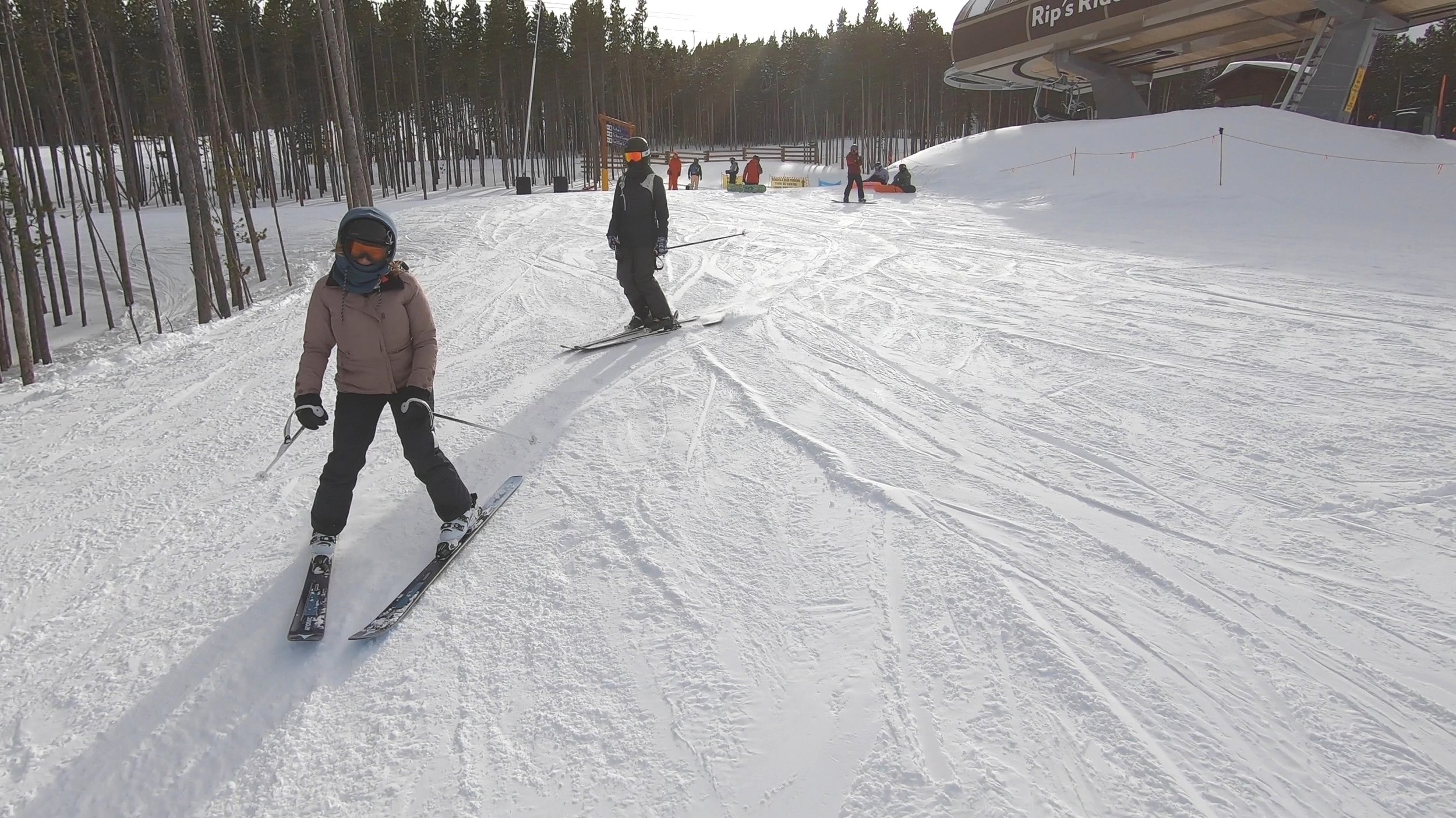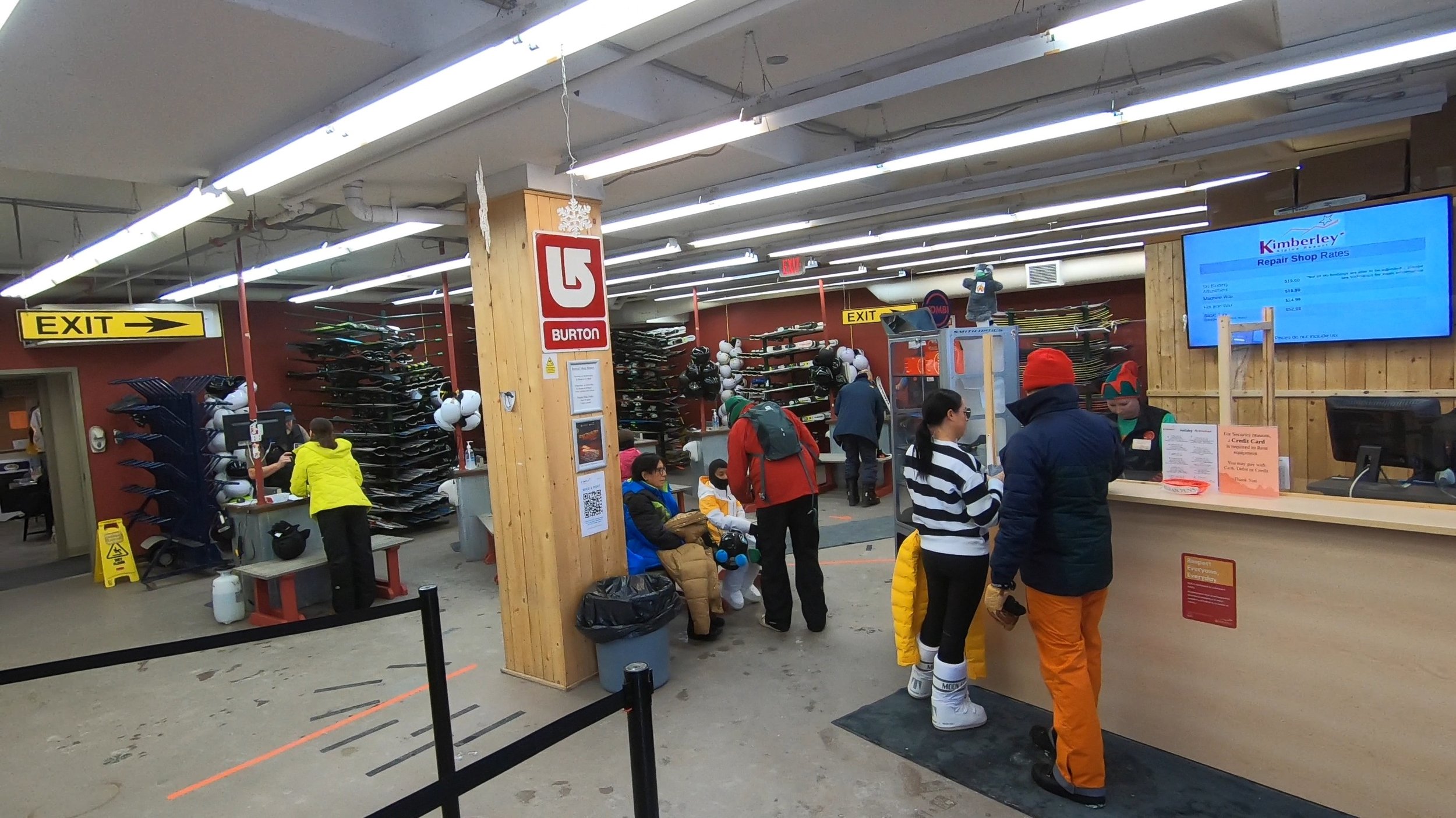Skiing or Riding for the First Time: Tips to Ensure a Successful Experience
Arriving in shape and bringing appropriate gear can be critical to a successful first day on the slopes.
Needless to say, we at PeakRankings are obsessed with mountain sports. Our goal in developing our rankings and analysis is to share our joy far and wide. We want to connect with readers and viewers who already know the exhilaration of breathing crisp, mountain air while gliding through ankle-deep powder or shredding corduroy; but we also want to introduce that life-changing excitement to newcomers, too. Unfortunately, mountain sports aren’t cheap, and the barrier to entry can be particularly high for those just starting, what with the cost of lift tickets, winter clothing, gear, travel and lodging, and lessons. It can be especially difficult for adults, when you may not have the same family or community network to push you to the mountain.
We’ve previously offered some general advice for those planning on taking their first lessons, and in this piece, we’ll discuss what you’ll need to know and the gear you’ll need to have on hand for a successful first day on the slopes. In a complementary piece, we’ll consider some specific suggestions for resorts that offer outstanding bargains for first-time skiing/riding experiences, as well as some more expensive destinations with above-average beginner terrain.
Then, in a Part 3, this author, a seasoned skier, will describe his experience snowboarding for the first time—from renting the gear, to meeting the instructor, to making his first turns ever with his feet bound together.
The Rip’s Ride beginner area at Breckenridge, Colorado. Look at those pizzas and french fries!
Planning ahead for your first outing
When you have selected a resort to visit (see below and our picks for destination beginner mountains), take some time to study the mountain trail map, which will be available on the resort’s website, and identify the learning areas and green-designated terrain. Also consider forming a group for your first outing; one of the best things about mountain sports is sharing the experience with others! Be sure to pack high protein, electrolyte-rich snacks and plenty of water for the day—it’s easy to get dehydrated while exerting yourself, especially in dry, high-altitude mountain air, and having a delicious snack to munch on is a good incentive to take frequent breaks to rest.
Arrive in shape
Skiing and snowboarding are first and foremost strenuous, full-body physical activities and you’ll get more out of your experience if your body is in good physical condition. At the same time, during this time of year it’s easy to fall into winter hibernation mode. Don’t fret if you haven’t been exercising lately, but for the best experience, do give yourself a few weeks to do some leg and cardio exercises. Being in shape will also help you stay resilient against on-slope injuries.
Choosing between snowboarding and skiing may come down to whether you have experienced friends already engaged in one of the sports.
Skiing or snowboarding: Which one should you try?
Of course, answering this question comes down to personal preference. Some argue that skiing is a bit easier to learn at the beginning but harder to master down the road, while snowboarding is harder to learn up front, but easier to progress in. One major consideration is that it is much easier to traverse on flat terrain on skis than on a snowboard. On skis, you can propel yourself forward by skating and pushing off on your poles. On a snowboard, you’ll have to release one foot from its binding to push along with. One last consideration: if you’re traveling with an experienced friend, it may be more fun, and you might learn more, participating in the same discipline as them.
The equipment rental shop at Kimberley, British Columbia.
Gear
Unless you can borrow from a friend or family member, you will almost certainly be renting some gear for your first outing. Typically, you’ll rent 1) boots, 2) skis/poles or snowboard, and 3) a helmet; but check with your ski shop: some also rent winter coats and snow pants. Our article on packing light offers a more complete list of gear, but for a first outing, you will need the following (asterisks signify rentable gear):
*Snowboard or Skis/poles
*Boots
*Helmet
*Waterproof snow pants or bib (no jeans!)
*Heavy winter coat (waterproof) or insulated midlayer plus waterproof shell
Insulated base layer (wool or synthetic)
Wool or synthetic winter socks
Waterproof gloves
Goggles (preferred), or sunglasses with retaining strap
Sunscreen for your face (which should be the only exposed area of your body)
You can get started on the slopes without goggles, but if it is snowing hard, very windy, or very sunny, you will be much more comfortable wearing them (snow, being white, reflects ultraviolet light very efficiently—both into your eyes and onto your skin).
Looking to buy these items before your trip? You can scoop them up in our Amazon idea list here! Please note that we get a small commission if you purchase an item through this list (although we are not directly financially affiliated with any of the listed products).
A snowboard lesson at Timberline Lodge, Oregon.
Take a lesson
You may have a friend, significant other, or relative who is excited to show you how to ski or ride, but even if they are expert on the slopes, we strongly recommend taking a lesson with a certified instructor for your first time out on the snow. There’s a difference between knowing how to ski and knowing how to teach skiing, and you’ll set yourself up for much greater success and enjoyment in the long term, not to mention managing your risk of injury, learning from a skilled teacher.
In our complementary piece, we list some outstanding learning packages we have found along with suggestions for destination resorts with above-average beginner terrain, but if you are fortunate enough to live within driving distance of a ski resort, likely the most cost-effective outing will be to make a day trip to take a lesson there. At most resorts, learning zones are located at the bottom of the mountain, meaning that most beginners visiting a premier destination resort will not have access to most of the full mountain experience that they will be paying top dollar for. Additionally, it would be disappointing to spend money on airfare and lodging only to learn after your first day that mountain sports really aren’t for you.
For example, I live relatively close to the Vail owned Boston Mills/Brandywine resorts in Ohio, and while advanced skiers and riders will exhaust what these resorts have to offer in a couple of hours, they are great places to learn. Even though these resorts offer no beginner packages, a first outing with no further commitment can be had for about $150 when booked in advance ($54 day pass; $50 for a two-hour group lesson; $37 for gear; $12 for helmet rental), a sum that is far less than the cost of a bundled package at many premier resorts, including some that we recommend in our destination piece.
Consider planning your first day skiing or snowboarding at a smaller, local hill for a reasonable cost of entry.
Conclusion
We hope the advice in this series provides the basis for you to have an amazing first day on the slopes. Planning ahead by preparing your body for strenuous mountain activity, assembling the necessary winter gear, and booking a lesson will set you up for success. Need help selecting a resort for you first lesson? Read on to the best destinations to learn at. When you get back, please let us know in the comments below how it went! And, as always, we also invite our experienced readers to offer additional tips that we may missed for getting new skiers and riders off to a great start.
Looking to compare resorts for your next ski trip? Check out our overall rankings here.






